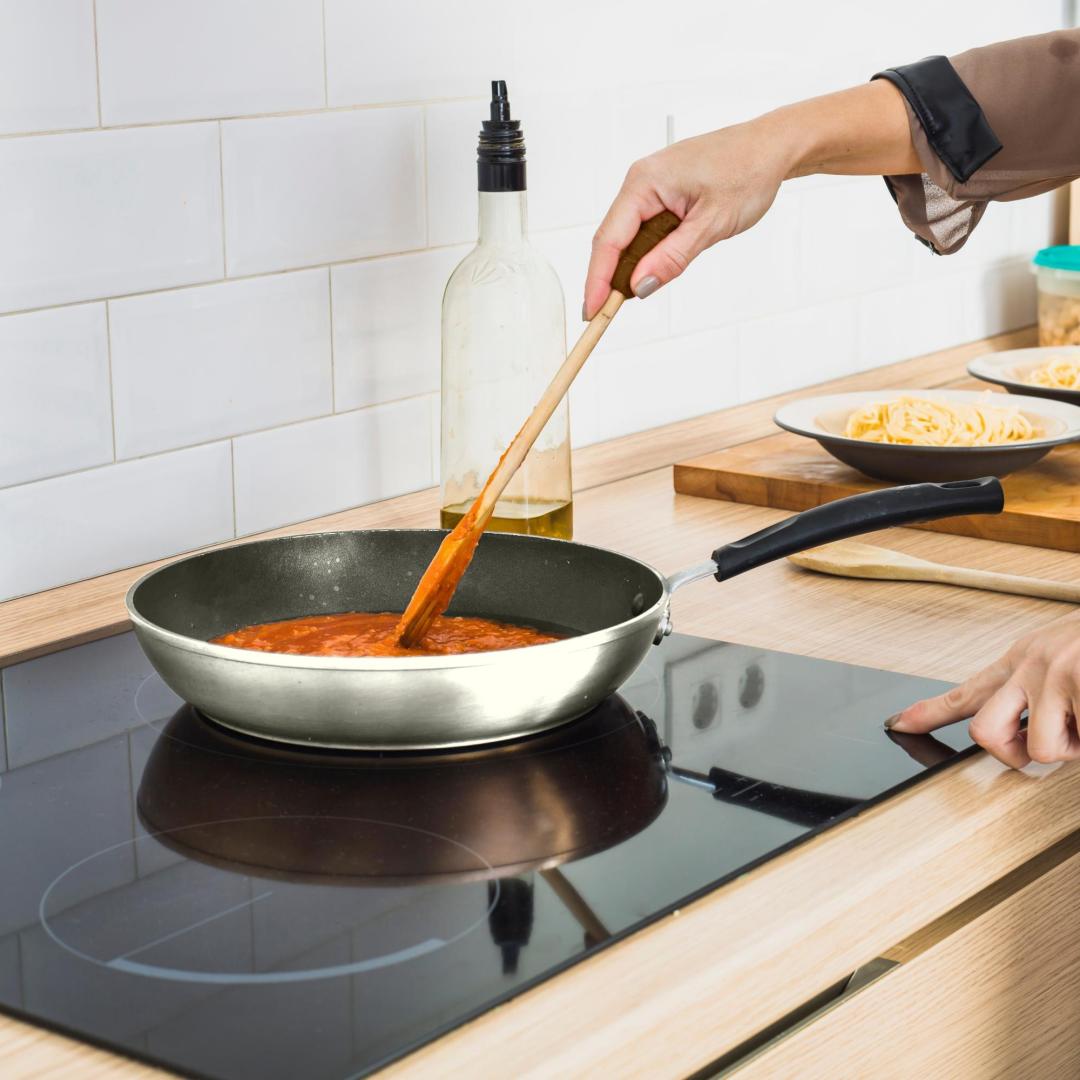What is a Nonstick Pan?
A nonstick pan is a handy kitchen tool designed to make cooking easier by preventing food from sticking to its surface. This feature not only simplifies cooking but also makes cleanup a breeze. Nonstick pans are popular for frying, sautéing, and even baking, allowing you to use less oil or fat, which can contribute to healthier meals.
How Nonstick Cookware Works?
The magic of nonstick cookware lies in the special coating applied to its surface. This coating reduces friction, enabling food to slide off effortlessly. Various materials create a barrier between the food and the pan, enhancing cooking efficiency and making it easier to prepare your favorite dishes.
Common Types of Nonstick Coatings
1. PTFE (Polytetrafluoroethylene)
- What It Is: A synthetic fluoropolymer known for its excellent nonstick properties. Teflon is a well-known brand associated with PTFE.
- Safety: When used correctly, PTFE is safe for cooking. Keeping your cooking temperatures controlled and following usage guidelines minimizes health risks. Avoid overheating (above 500°F or 260°C) to prevent harmful fumes.
2. PFOA (Perfluorooctanoic Acid)
- What It Is: PFOA was historically used in the production of PTFE coatings.
- Safety: Due to health concerns, including potential links to tumors and developmental issues in animals, PFOA has been banned in cookware since 2015. Most modern nonstick cookware is now free of this substance.
3. PFAS (Per- and Polyfluoroalkyl Substances)
- What It Is: A broader class of chemicals that includes PFOA and PFOS, often referred to as "forever chemicals" due to their persistence in the environment.
- Safety: While some PFAS have raised health concerns, many reputable cookware brands have eliminated these substances. Ongoing research continues to assess their long-term effects, but many products today are PFAS-free.
4. Ceramic Coatings
- What It Is: Made from inorganic materials, ceramic coatings are marketed as safer alternatives to traditional nonstick coatings.
- Safety: Generally considered safe and free from harmful chemicals like PFOA and PFAS, ceramic coatings provide excellent nonstick performance.
5. Titanium Coatings
- What It Is: Titanium nonstick coatings are made by infusing titanium particles into the nonstick surface, providing enhanced durability and scratch resistance.
- Safety: Titanium coatings are generally considered safe and are often free from harmful chemicals like PFOA and PFAS. They offer excellent nonstick properties and can withstand higher cooking temperatures compared to traditional coatings.
- Cost: Titanium coatings tend to be more expensive than other nonstick options due to their durability and performance advantages.
6. Enameled Coatings
- What It Is: Enameled cookware features a vitreous enamel coating, usually made from glass, applied to metal surfaces (like cast iron). This coating provides a nonstick surface and adds aesthetic appeal.
- Safety: Enameled coatings are generally considered safe as they do not leach chemicals into food. They are also resistant to scratching and staining.
- Durability: Enameled cookware is durable and can withstand high temperatures, but it may chip if mishandled.
Are These Coatings Safe?
The safety of nonstick coatings depends on their chemical composition and manufacturing processes. Here’s a quick rundown:
- Ceramic, Titanium, and Enameled: Generally considered safe, offering a healthy cooking experience, though titanium may come at a higher price point.
- PTFE: Safe when used properly; controlled cooking temperatures ensure no health risks.
- PFOA: No longer used in most cookware due to significant health risks.
-
PFAS: Many brands have eliminated these substances, focusing on safer alternatives.
Conclusion
Understanding nonstick coatings and their safety is essential for making informed choices in your kitchen. While traditional options like PTFE are safe when used correctly, newer alternatives like ceramic offer additional peace of mind. The ban on harmful chemicals like PFOA since 2015 is a positive step toward safer cookware.
Chef Power products are designed to provide a healthy cooking experience without compromising performance. With a ceramic coating free from harmful chemicals, you can cook with confidence. Whether frying, sautéing, or baking, Chef Power's cookware offers excellent nonstick properties, making both cooking and cleanup effortless.

